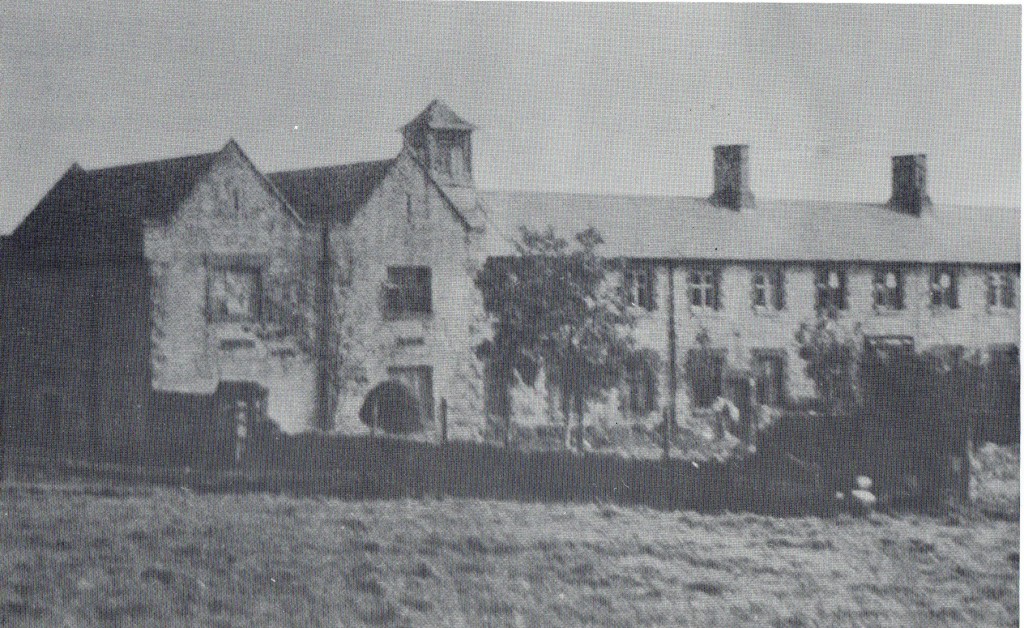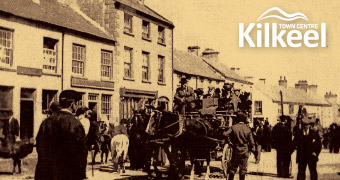Anyone in a workhouse who was capable work was under no circumstances allowed to be idle. Men were employed with breaking stones, grinding corn, working on the land or any other kinds of manual labour. Women were given duties such as mending clothes, looking after children and the sick, washing and taking part in some manual labour.
A day in the workhouse normally started at 7am where everyone had to rise and dress, enter the hall for prayers and inspections, and then were given their breakfast of stirabout and milk. They were then made to work from here on until the afternoon where they had dinner of maybe potatoes or brown bread and soup. Food in the workhouse was not very exciting at all. Below is an example of what the inmates of Kilkeel Workhouse were fed in 1846, when the potatoes ran out;
‘ The following ‘dietary ordered for dinner instead of potatoes; on Sundays and Thursdays: men, women and children above 9 and under 15 got 3/4 lb. bread. Children above 2 and under 9 got 1/2 lb. of bread with soup made of barley as previously. For the remaining 5 days in the week men, women and children above 9 and under 15 got 7 oz.’s of Indian meal made into stirabout with 1/3 of a quarter of buttermilk. Children above 2 and under 9 got 3 and a 1/2 oz. of Indian meal made into stirabout, with 1/6 of a quarter of buttermilk.’[1]
Below is an example of what the Kilkeel Board of Guardians deemed ‘necessaries’ for an ensuing week;
60lb. bread
2lb. butter
34 qts. new milk
18lb. meat
300 qts. buttermilk
1 cwt. salt
5 ton oatmeal
1lb. tea [2]
Inmates were not allowed back into their dormitories until around eight o’clock at night. Leisure time was not very common in workhouses, and the inmates were forbidden from playing cards, ‘any games of chance’ , smoking and drinking. When visitors came to see inmates, they were accompanied by the Master, Matron or officer.[3]
Some of the Staff of Kilkeel Workhouse
1859: Sarah Henderson matron of the Fever Hospital.[4]
1863: James Donaldson is master of the Kilkeel Workhouse.[5]
1870: Thomas Graham is Clerk to the Union of Kilkeel. Caroline Anderson is the schoolmistress to the workhouse and J. H. Clarke is medical attendant to the Poor Law Union.[6]
1880: Master of Workhouse is Samuel Ormsly and matron is his wife. Mrs Maxwell is matron of Fever Hospital and Relieving Officer is a Mr. J Mackintosh. The medical officer was Dr. Irwin and solicitor was John Hunter Moore. The chaplain for the Church of Ireland was Rev. Edward O’Brien Pratt, Presbyterian chaplain was Rev. George Nesbitt and the Roman Catholic chaplain was George Maguire.[7]
The Grave Diggers of Kilkeel Workhouse
Burying the inmates of the Workhouse might have been a grisly task but someone had to do it. Here are the names and wages of the grave diggers in June 1847;
George McManus £0.15.0
James Wightman £0.14.0
Henry McBride £0.8.0 [8]
The dead of Kilkeel Workhouse were buried in what is known as the ‘Burial Banks’. These are situated behind the Brethren Church on Mountain Road, along the river. The unmarked graves of the paupers and inmates can be found there.
[1] Board of Guardians Minutes, p.134, PRONI.
[2] Board of Guardians Minutes, p.63, PRONI.
[3] Researching Down Ancestors: A Practical Guide for the Family And Local Historian, Ian Maxwell p. 178-9
[4] Petty Sessions Records.
[5] Petty Sessions Records.
[6] Slater’s Directory 1870.
[7] B & PU Directory 1880, p.118.
[8] From Board of Guardians Minutes 30 June 1847, from PRONI.



